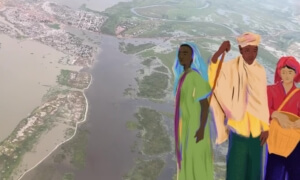From the ”post-2012” regime to the ”post-2020” climate regime: a long and winding road
This document analyses the outcomes of the Durban Conference in terms of development and international solidarity issues. Its primary focus is national ambitions for tackling climate change, which can be assessed in relation to the process put in place to negotiate a future global agreement, the need to increase every country’s emissions mitigation objectives, and continuing the Kyoto Protocol in the framework of a second commitment period. The analysis then turns to the international negotiations on implementing the agreements reached in Cancun, highlighting points that still needed to be resolved in Durban. The second section deals with financing efforts to tackle climate change in developing countries. Following the creation of the Green Climate Fund in Cancun in 2010, countries were supposed to adopt arrangements in Durban to facilitate its implementation from 2012 onwards. COP17 was only partially successful in this respect, as several questions still need to be resolved to ensure that finance for the Green Climate Fund is mobilized and utilised effectively and equitably. The most political aspects of finance were supposed to be discussed in Durban: in particular, member states were to debate sources of finance for the Green Climate Fund in order to meet the commitment that developed countries made in Copenhagen to mobilize 100 billion dollars a year between now and 2020. The third section analyses the outcomes of COP17 with regard to adaptation to climate change.
This has long been ignored in climate negotiations, but is becoming increasingly important at the international level and in national- and local-level actions in various countries. The technical advances made on adaptation in Cancun were supposed to be activated and strengthened in Durban.
The fourth section deals with agriculture, which has become a flagship issue in international negotiations in the last few years, but received no political recognition in any decision taken at COP17. Agriculture accounts for at least 14% of global GHG emissions (without taking account of deforestation), and is a key sector for adaptation to the impacts of climate change among the poorest and most vulnerable. Many saw Durban as the last chance for agriculture to be officially included in the framework of the Climate Convention.
The fifth and final section of this document looks at the REDD+ mechanism. Like adaptation, it is one component of international negotiations where decisive progress was made in Cancun.
Durban was supposed to specify the technical modalities framing action on the ground, and resolve the key political question of which mechanisms and sources of funding will be used to finance the battle against deforestation and forest degradation in the long term.








